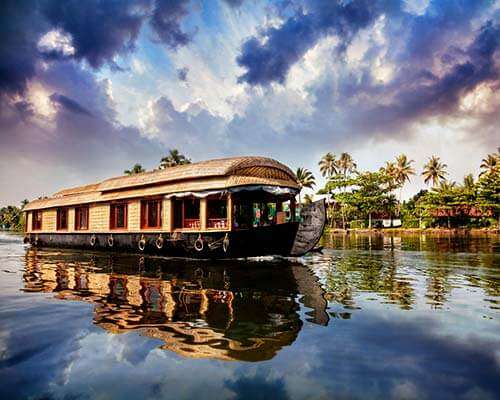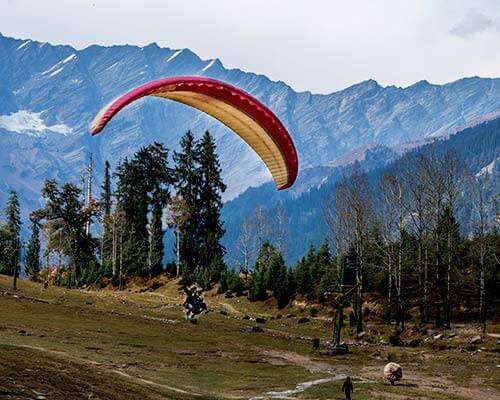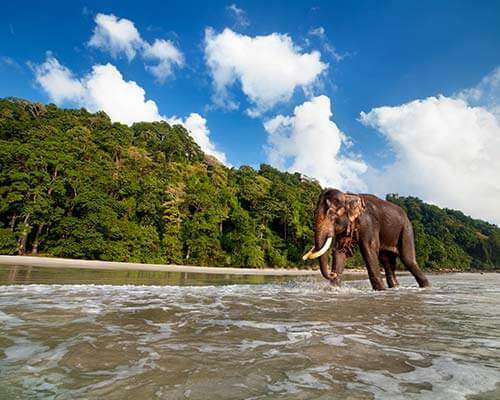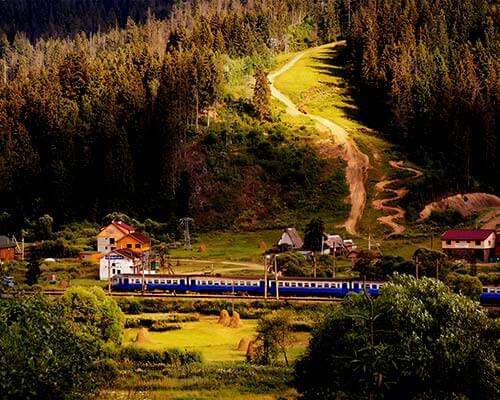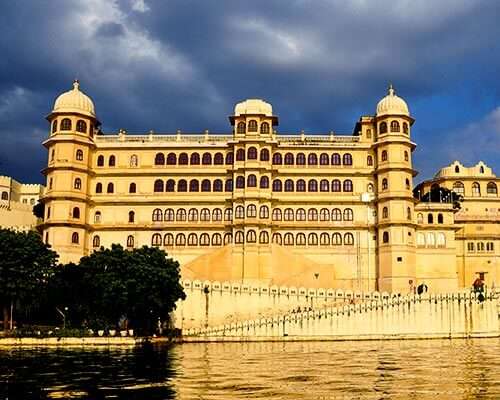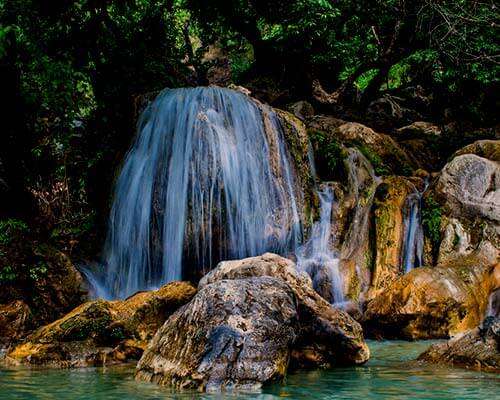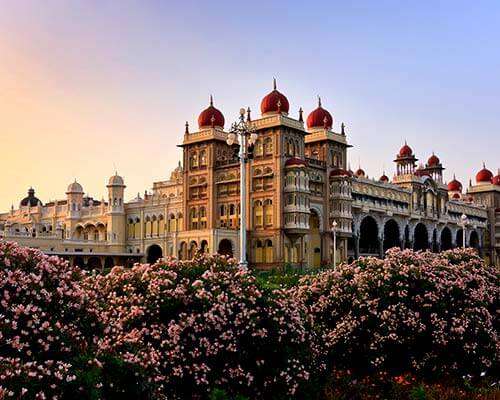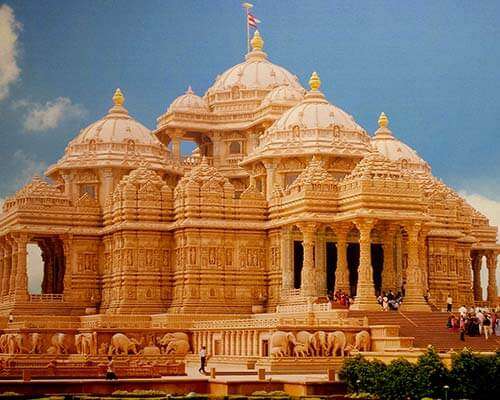Sagarmatha National Park: A Spectacular Bioreserve In The Lap Of Mount Everest
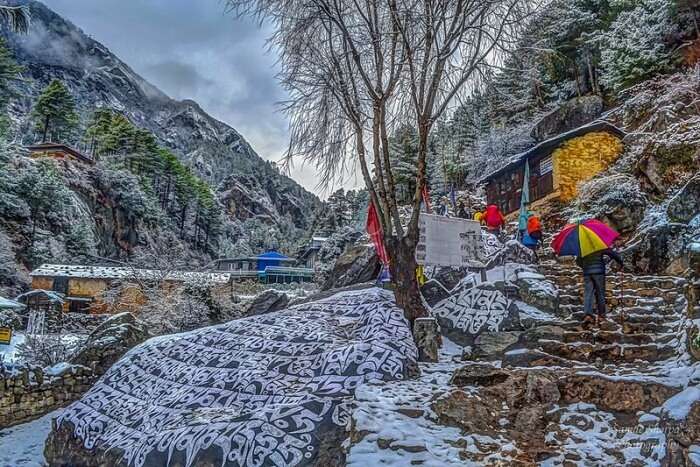
Encircled by mighty Mount Everest, and other peaks, deep ravines, and Himalayan glaciers; Sagarmatha National Park is one of the most scenic masterpieces on Earth, located in north-east Nepal. Nestled at a distance of 135 km from Kathmandu, this national park is listed as a World Heritage Site by UNESCO and one of the Sacred Himalayan Landscapes. From flora, fauna to spectacular landscape, every aspect of nature’s charm is preserved here.
If you are planning a visit to this Himalayan wonder, this little guide on Sagarmatha National Park will help you make the most of it.
Best time To Visit Sagarmatha National Park

The best time to visit is from October-November and March to May. June to September should be avoided as the place receives heavy rainfall, approximately 1000 mm and makes it difficult for hiking and camping. Winter months starting from December to February are extremely cold and snowfall is common in these months.
Must Read: Trekking In Nepal: 20 Treacherous Treks To Challenge Your Nerves
Location & Geography
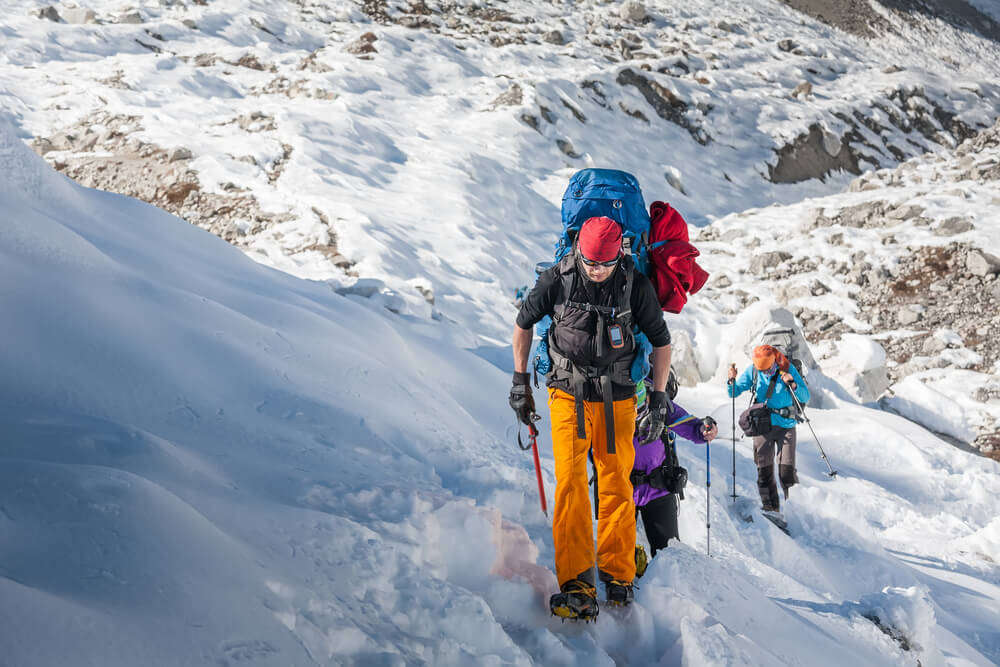
Established in 1976, Sagarmatha National Park is located in Khumbu region of Nepal. It is the first national park of Nepal. Encompassing an area of 1148 sq. km, this bioreserve ranges in altitude between 2845-8848 m. Sagarmatha National Park is bordered by Qomolangma National Nature Preserve of Tibet Autonomous Region in the north and Dudh Koshi River in the south. Sagarmatha National Park became a natural World Heritage Site in 1979.
Looking To Book An International Holiday?
Book memorable holidays on TravelTriangle with 650+ verified travel agents for 65+ domestic and international destinations.
Other Details
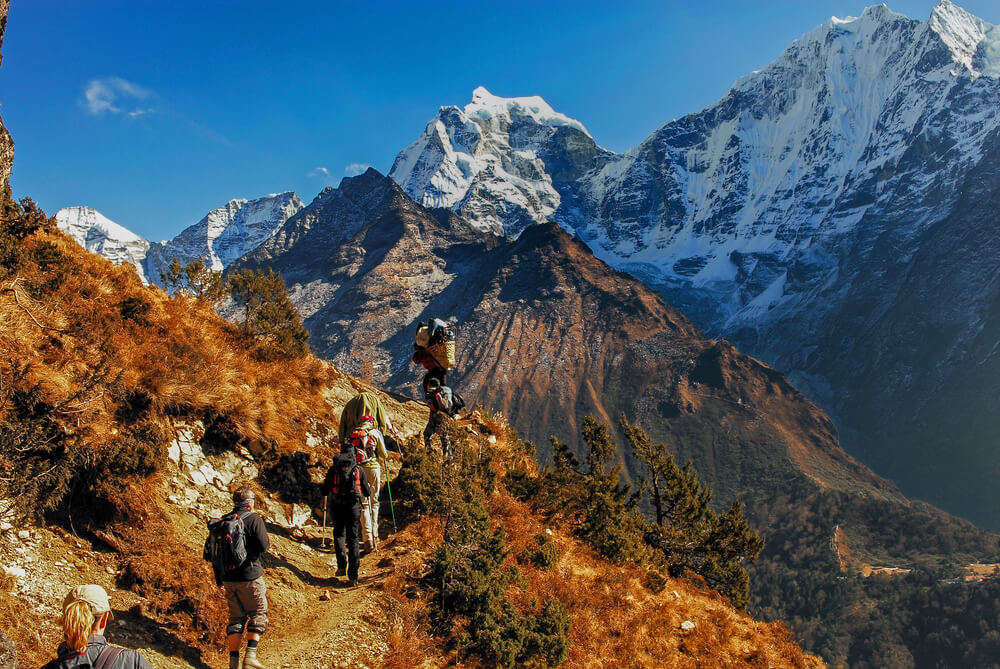
Climate
The climate at Sagarmatha National Park in Nepal varies between semi-arid subtropical to temperate type, with medium to heavy annual rainfall. Summer months are moderate, whereas July to September record heavy precipitation. Winter months are extremely cold and the temperature drops below freezing point.
Sagarmatha National Park Entry Fee And Timings
The scenic park remains open for 24 hours to offer convenience to all tourists, but it is advisable to visit the same before sunset. Hiking and trekking in dark is a bit risky, owing to the presence of endemic wildlife.
For the entrance, you need to buy an access pass from the visitor centre for Sagarmatha National Park, which is located at Monzo and Namche Bazaar. The pass costs INR 1500 for SAARC nationals, INR 3000 for foreigners and INR 25 for locals of Nepal. Passports are required to issue the access pass.
Suggested Read: 10 Pristine Lakes Of Nepal That Ooze Serenity & Tranquility
Flora And Fauna Of Sagarmatha National Park
The national park in Nepal is profusely rich in variety of flora and fauna. If you lovebirdwatching, you are in for a treat. There also unique indigenius animals that you will find along the trail.
Flora Of Sagarmatha National Park
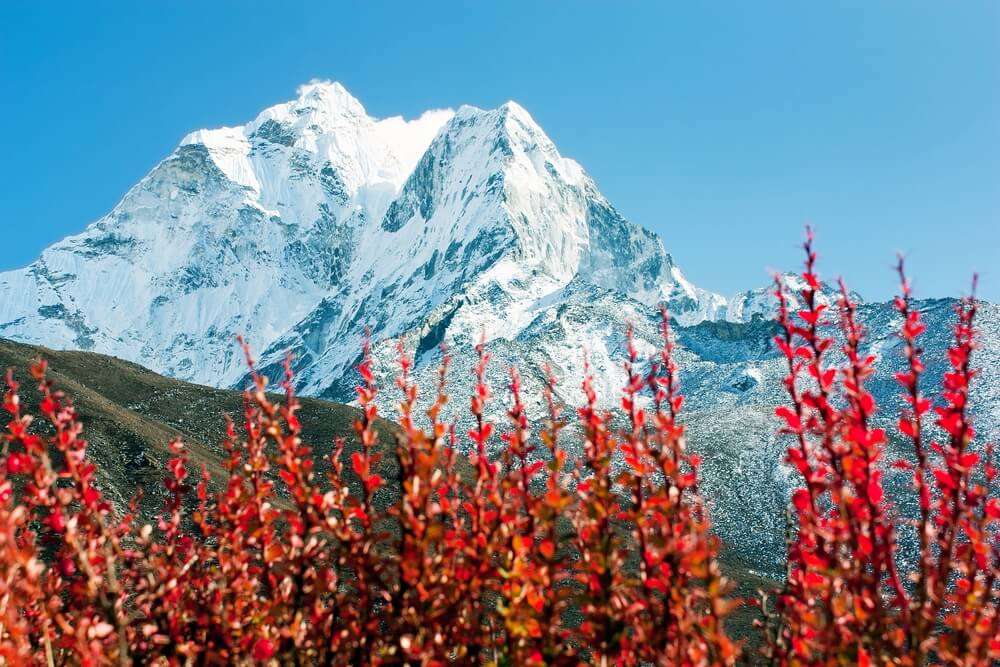
As the national park varies in altitude from 2845-8848 m, one can witness distinct variation in vegetation types. The forests of lower altitudes are dominated by rhododendrons, birch, juniper, blue pines, fir and bamboo. In higher altitudes, dwarf shrubs, mosses, and lichens are found. Rhododendrons bloom in April and May and stay colorful and vibrant till September.
Fauna Of Sagarmatha National Park
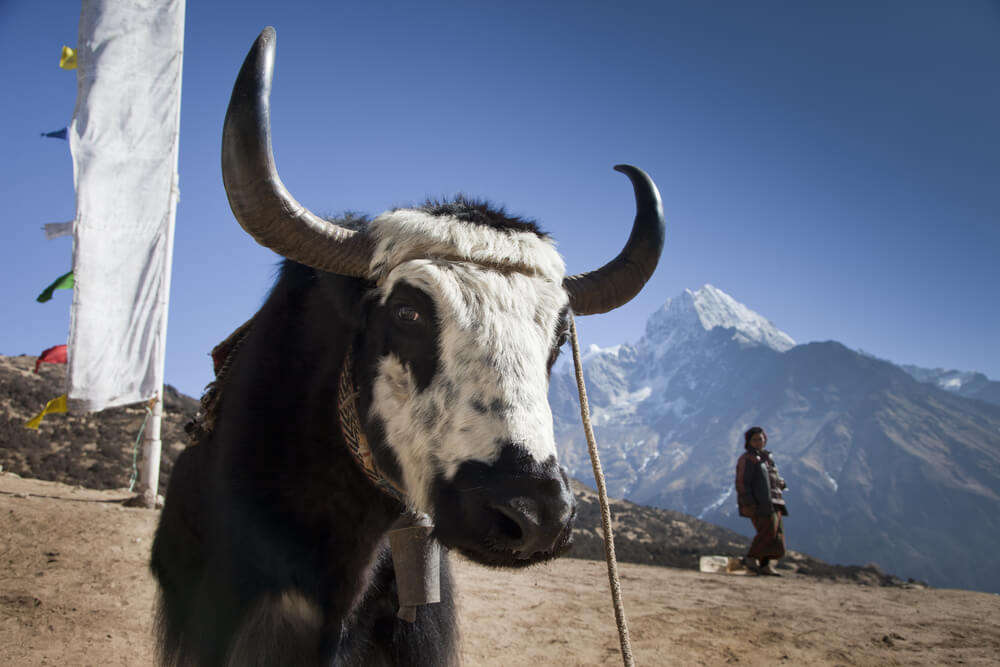
There is a wide range of wildlife that can be spotted inside the park which includes Himalayan Tahr, Musk deer, Ghoral, snow leopards, wolves, lynx, and weasels. Sagarmatha National Park is the home to almost 1000 plus rare to endangered bird species and some of them are Himalayan monal, Snowcock, Yellow-billed chough, Blood pheasant and Red-billed Chough. This is the reason, why Sagarmatha National Park is coined as an Important Bird Area by BirdLife International.
Suggested Read: 11 Festivals Of Nepal To Experience The Country’s Heritage
Planning your holiday but confused about where to go? These travel stories help you find your best trip ever!
Real travel stories. Real stays. Handy tips to help you make the right choice.
Things To Do In Sagarmatha National Park
There are a plenty of things to do and experiences to have in this park. make sure you make your trip to this attraction enriching by adding all these experiences on your list.
1. Hiking
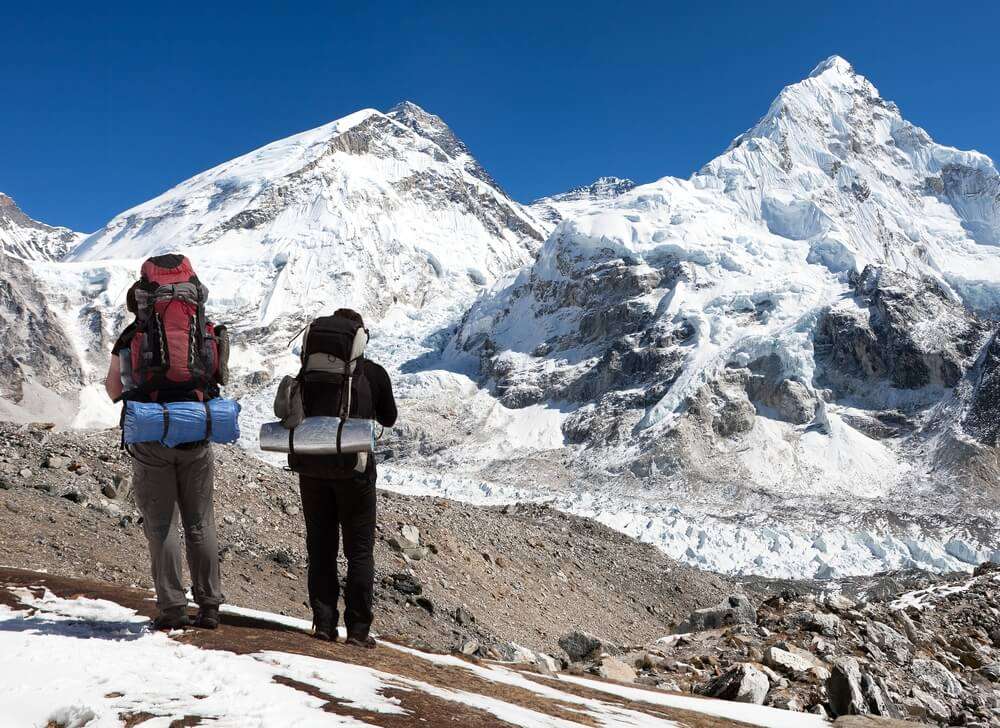
In Sagarmatha National Park, hiking is the most popular adventure activity among visitors. Rugged hilly trails are present inside the forest and each trail offers excellent views of Himalayan peaks, mountains, and valleys. People can access most of the trails on their own but if you hire a local Sherpa, it is certainly better and more effective. Take a Sagarmatha National Park tour to visit the best of hiking trails and camping sites.
2. Gyko Lake: Camping!
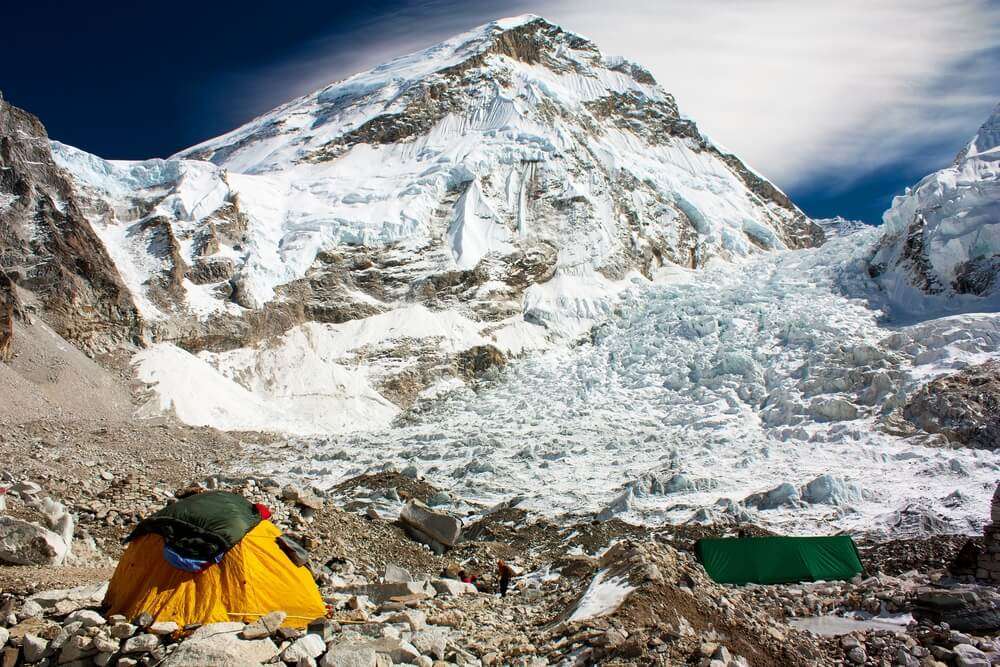
If you are fond of adventure and thrill; camping on the banks of the beautiful Gyko lake is an awesome idea. This is a beautiful lake, located in Sagarmatha National Park, which remains frozen during winter. Pitch a tent beneath the open sky and take camping experience to a different level. Though the place offers enthralling views of surrounding mountains and glaciers but seeing the mighty Mount Everest from Gyko Lake is surely a stunner.
Suggested Read: Nepal Honeymoon Guide: Here’s What You Need To Plan The Romantic Vacation
3. Mt. Taboche: Trekking Up To The Highest Point Monastery
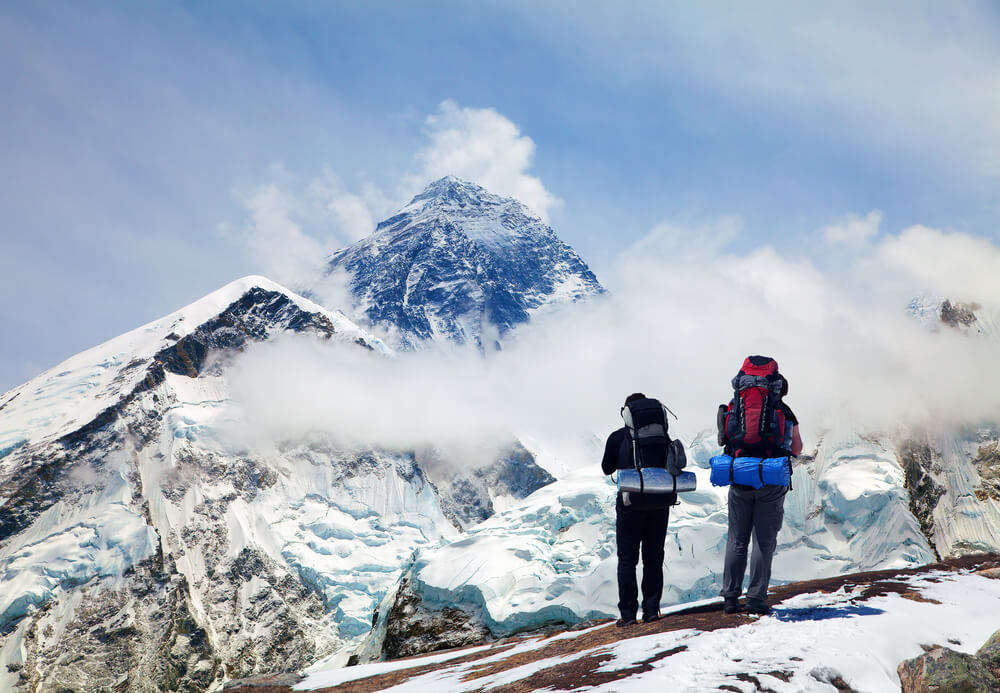
Trekking up to Mt. Taboche is steep and challenging, but as soon as you reach the highest point monastery at Taboche; the surrounding views will surely make your jaw drop and refresh your heart. Taboche monastery is a beautiful stupa and a Buddhism preaching and promotion center. Visit this place to worship, seek blessings and soothe your heart.
4. Mount Everest: Viewing It From Kala Pathar
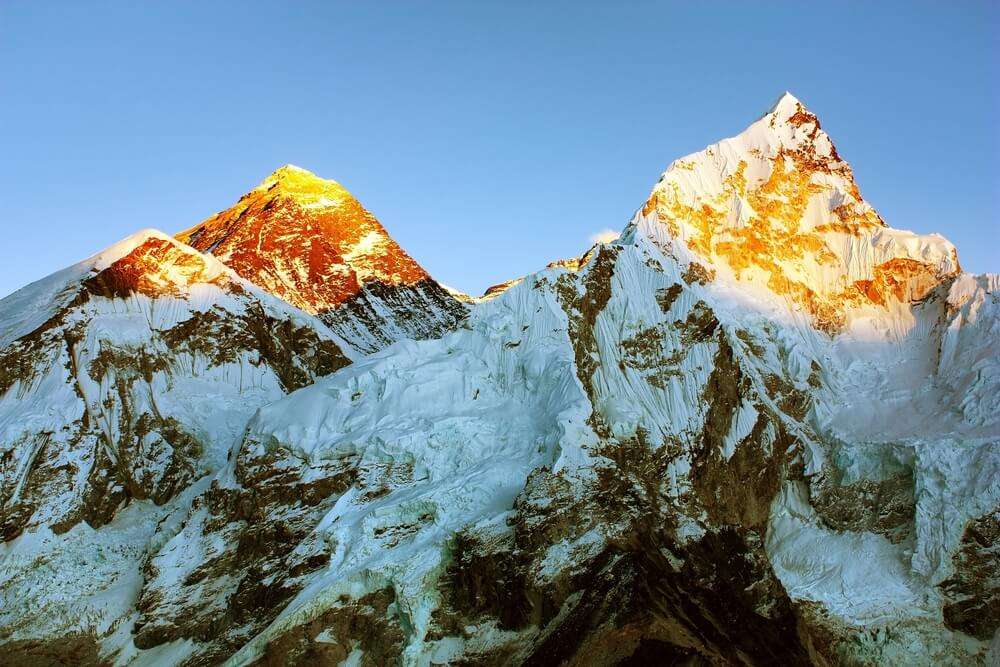
Kala Patthar, located within Sagarmatha National Park is the closest viewpoint of Mount Everest. Located at 5545 m, one needs to experience a steep ascend before reaching this mesmerizing spot. Not only Everest, the spectacular scenery of snow-laden Himalayan peaks and ranges, make the trek, worth in every sense.
Suggested Read: 10 Ancient Nepal Temples In The Serenity Of The Himalayas
5. Dudh Koshi River: Chilling

Dudh Koshi River borders the bioreserve in the south and offers the amazing sight of flowing stream over rugged terrain. Spending time on the banks of this forceful river and enjoying the stunning beauty is one of the best things to do in Sagarmatha National Park. There are a lot of suspension bridges over the river, which offer even more amazing views.
Suggested Read: 15 Engrossing Things To Do In Nepal For All Adventure Junkies!
Places To Stay Near Sagarmatha National Park

Wondering where to stay during your excursion to this park? Well, here is your answer to the best available accommodation in or near the park. Well, there aren’t fully-equipped hotels and resorts near the park, so where to stay near Sagarmatha National Park is a concern that haunts every traveler. But worry not! There are some decent homestays and lodges nearby, that offers comfortable and convenient accommodation with basic amenities. You may book at Yeti Mountain Home Phakding, Thanka Inn, Everest Inn, and Hotel Khangri.
How To Reach Sagarmatha National Park
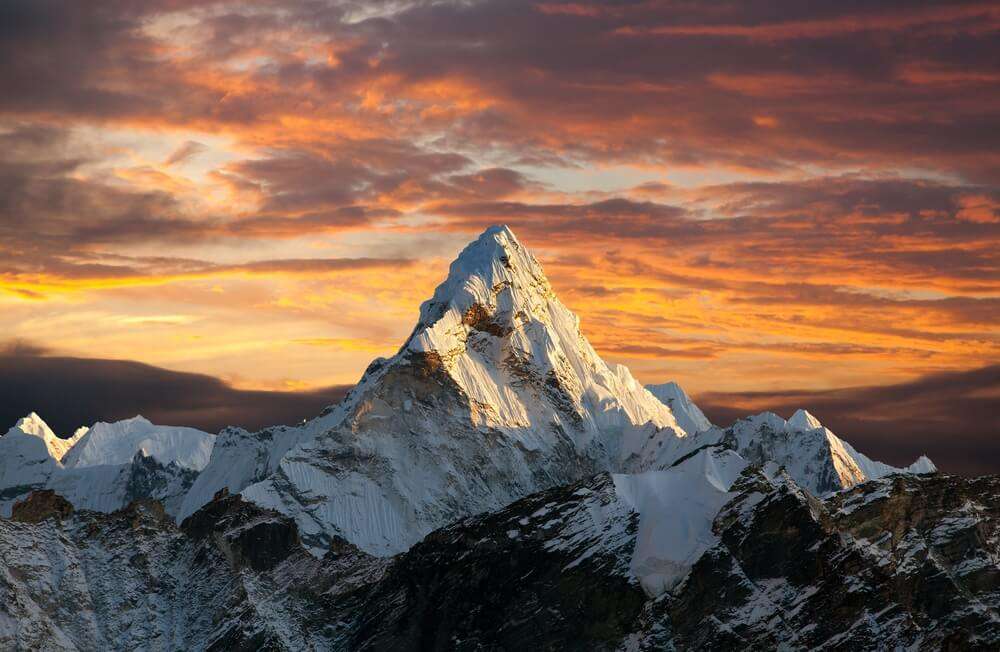
Sagarmatha National Park enjoys a remote location and accessibility is quite a challenge. The nearest air connect is at Tenzing-Hillary Airport, Lukla- which is 33 km away. The best and easiest way to reach Sagarmatha National park from Kathmandu is to take a short flight (25minutes) to Lukla. From Lukla, one can trek up to the national park. The trail is steep, rugged yet extremely exciting.
Kathmandu to Sagarmatha National Park distance: 135 Kms
Sagarmatha National Park Map
Further Read: 42 Most Popular Tourist Places In Nepal You Ought To Visit On Your Trip
Is your brave heart ready to explore Sagarmatha National Park? Fair enough! Plan a trip to Nepal and put this attraction to your itinerary to get the best of Nepal’s nature.
Disclaimer: TravelTriangle claims no credit for images featured on our blog site unless otherwise noted. All visual content is copyrighted to its respectful owners. We try to link back to original sources whenever possible. If you own the rights to any of the images, and do not wish them to appear on TravelTriangle, please contact us and they will be promptly removed. We believe in providing proper attribution to the original author, artist or photographer.
Please Note: Any information published by TravelTriangle in any form of content is not intended to be a substitute for any kind of medical advice, and one must not take any action before consulting a professional medical expert of their own choice.
Frequently Asked Questions About Sagarmatha National Park
Why is Sagarmatha National Park so important?
Sagarmatha National park is the country’s first national park and inscribed as the Natural World Heritage Siteb which makes this place an important attraction in the country.
How many districts are there in Sagarmatha zone?
There are in total 14 districts in Sagarmatha zone which are located at the Eastern Nepal.
When was Sagarmatha National Park enlisted in World Heritage list?
Sagarmatha National Park was enlisted in World Heritage list in 1979.
Looking To Book A Holiday Package?
Book memorable holidays on TravelTriangle with 650+ verified travel agents for 65+ domestic and international destinations.
People Also Read:
Popa National Park Phrumsengla National Park Kaeng Krachan National Park
A book lover and fun-loving, overtly emotional mom with a wanderlust soul, Sukanya has completed her Master Degree in Geography and currently perusing her passion for writing as a profession. Nothing detoxes her more than trying new recipes and travelling to offbeat places is ultimate Therapy for her.



















